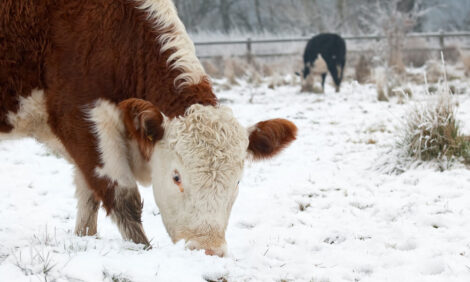



UW Ag Dean Outlines Brucellosis Plan of Action
WYOMING, US - Wyoming has emerged as a national leader in combating brucellosis, but more research and additional management solutions are needed to fight the disease, according to testimony presented (Wednesday) to members of the state's Joint Agriculture, State and Public Lands and Water Resources Interim Committee.University of Wyoming College of Agriculture Dean Frank Galey, chairman of the Wyoming Brucellosis Coordination Team, said long-term solutions are needed to fight brucellosis, a bacterial disease that can cause domestic cattle, elk and bison to abort their calves. Elk and bison of the Greater Yellowstone area of Wyoming, Montana and Idaho are the last major reservoirs of brucellosis in the United States.
Among the team's top recommendations is to continue support for the Wyoming Wildlife Livestock Disease Research Partnership, a collaborative effort of the University of Wyoming, the Wyoming Game and Fish Department, the Wyoming Department of Agriculture and the Wyoming Livestock Board.
The partnership has supported research about vaccine developments, improved diagnostics and other livestock and wildlife health initiatives. Galey said UW researchers with expertise in management and health of both wildlife and cattle have conducted in-depth studies on a variety of issues related to brucellosis.
"We're grateful for the state legislature's support for elk handling units and Game and Fish actions and testing, and for our congressional delegation's support for wildlife disease research in the form of several special research grants," he said.
Such support is essential, he said, because the U.S. Department of Agriculture and federal animal health agencies have established other priorities and do not appear interested in funding brucellosis research.
Other recommendations include continuing to encourage Game and Fish managers to work with ranchers to develop management plans for domestic and wildlife herds. He noted the cooperative effort has been successful in creating a framework for developing those plans.
"Those plans were specifically designed to address issues to minimize contact between elk and cattle, to describe ways to reduce transmission on the feed grounds themselves and to have a dialogue about the fate of each winter feed ground," Galey said, noting that state support was requested and received to assist in developing those plans. The plans were successful in part because ranchers cooperated, and he encouraged maintaining relationships with them.
The team continues to pursue additional measures including relief to ranchers for testing, vaccination and the costs of spaying heifers.
Further Reading
| - | Find out more information on Brucellosis by clicking here. |
TheCattleSite News Desk


